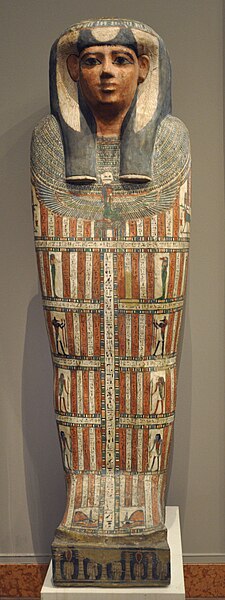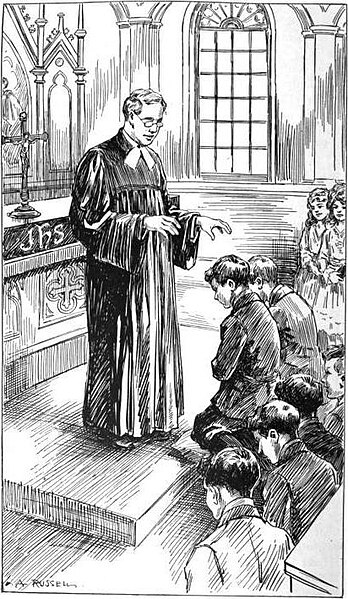The ordination of women to ministerial or priestly office is an increasingly common practice among some contemporary major religious groups. It remains a controversial issue in certain religious groups in which ordination was traditionally reserved for men.
First woman Mariavite bishop Maria Izabela Wiłucka-Kowalska was consecrated in 1960 in Plock.
Katharine Jefferts Schori was elected in 2006 as the first female Presiding Bishop of the U.S. Episcopal Church and also the first female primate in the Anglican Communion.
Cylinder seal (c. 2100 BCE) depicting goddesses conducting mortal males through a religious rite
Sarcophagus of the Egyptian priestess Iset-en-kheb, 25th–26th Dynasty (7th–6th century BC)
In Christianity, a minister is a person authorised by a church or other religious organization to perform functions such as teaching of beliefs; leading services such as weddings, baptisms or funerals; or otherwise providing spiritual guidance to the community. The term is taken from Latin minister. In some church traditions the term is usually used for people who have been ordained, but in other traditions it can also be used for non-ordained.
A Lutheran minister wearing a Geneva gown and bands. In many churches, ministers wear distinctive clothing, called vestments, when presiding over services of worship.
Francis of Assisi with the ecclesiastical tonsure. Francis was an ordained deacon.
Metropolitan Vladimir of Kiev, the first bishop to be martyred at the time of the Russian Revolution
Scene of baptism. Stained glass from the Sainte-Chapelle of Paris, last quarter of the 12th century.








